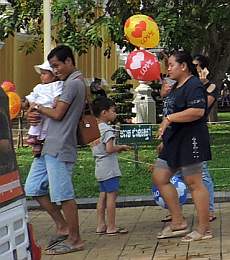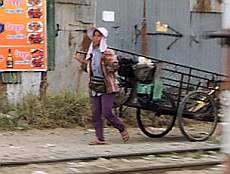 For reasons like lack of electricity for refrigeration, some parts of the Phnom Penh economy work every day. And then there are those really poor people who work so they can eat that day. Click here to see more pictures from the streets during the Water Festival.
For reasons like lack of electricity for refrigeration, some parts of the Phnom Penh economy work every day. And then there are those really poor people who work so they can eat that day. Click here to see more pictures from the streets during the Water Festival.
Category: Culture
Water Festival 2018 #2
Water Festival 2018 #1
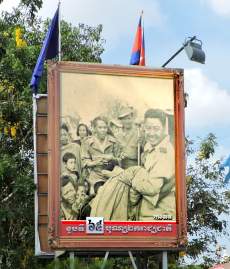
The Water Festival is on Wednesday, Thursday, and Friday of this week but already the preparations are much in evidence. Click here to see some of the work that is preparing Phnom Penh for the festival.
Buddhist Fund-Raising
Organizations collect money in Cambodia just like everywhere else in the world, but here they don’t use robocalls and direct mail. It’s a more people-to-people approach here where figures like these process through the streets accompanied by a tuk-tuk with a loudspeaker announcing the presence of the figure–and the accompanying woman who collects the money for a Buddhist organization in this case.
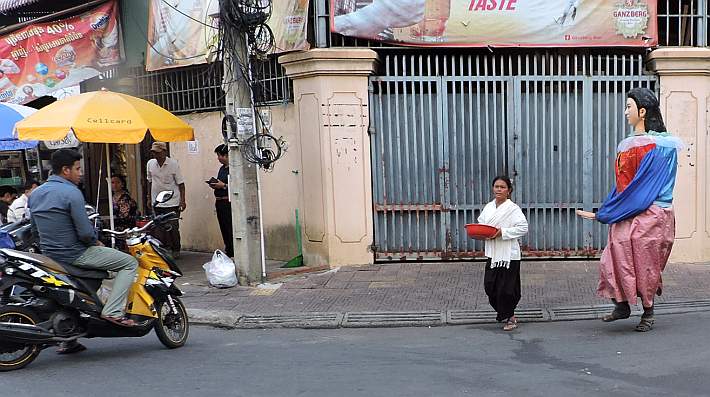
Pchum Ben Festival
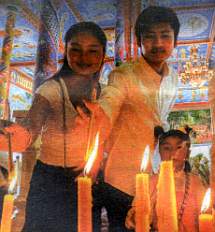
October 8-10 are the three public holidays of this year’s Pchum Ben festival, a traditional religious occasion when people honor their ancestors, particularly by making offerings of rice balls in the pagodas. Click here for some photos from the beginning of the holiday period.
Topics: Sun–Drying Food
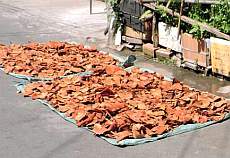 People in Cambodia want to keep the sun off themselves–it’s hot and makes their skin dark–but foods are left out in the sun to dry throughout Cambodia, in the city as well as the countryside. Click here for some examples in Phnom Penh.
People in Cambodia want to keep the sun off themselves–it’s hot and makes their skin dark–but foods are left out in the sun to dry throughout Cambodia, in the city as well as the countryside. Click here for some examples in Phnom Penh.
The Killing Fields
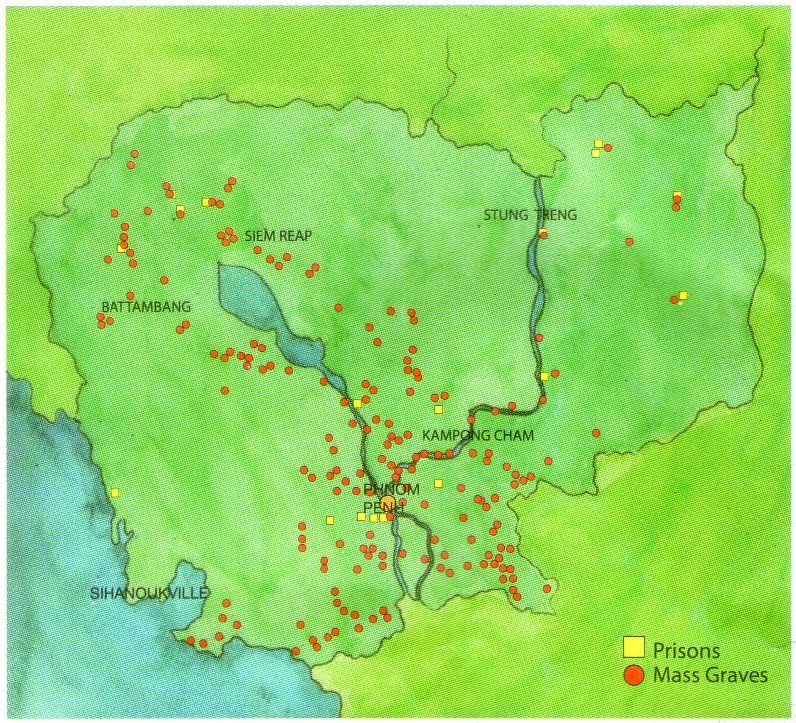
Many people have seen the movie The Killing Field and many have visited the killing field near Phnom Penh, the site most people know of. There are actually about 300 killing fields, though, spread throughout the country. There is such a large number of these fields because the number of Cambodians killed by the Khmer Rouge was great. It is generally thought that the Pol Pot regime was responsible for the deaths of perhaps 1.5 to 2 million people. The killing field that most tourists visit is the orange dot along the river, immediately south of Phnom Penh (next to the row of three yellow prison dots).
Topics: Sun (Covering Vehicles)
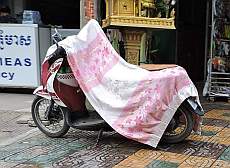 The sun is bright and hot in Cambodia and people cover up themselves and their vehicles. Click here to see some of the cover-ups on Phnom Penh streets.
The sun is bright and hot in Cambodia and people cover up themselves and their vehicles. Click here to see some of the cover-ups on Phnom Penh streets.
Topics: Motorcycles #2

Something of a footnote to the first generation of Honda Cubs is the Honda Chaly, a smaller lighter machine that appealed to a special group. Click here to see the Chalys.
Topics: Motorcycles #1
 Motorcycles are the number one mode of transportation in Cambodia. They are not only cheap and reliable, but they can also go places, e.g., along the dikes between rice paddies, where cars and tuk-tuks can’t venture. This is the first of a series of photos about the development of motorcycles in Cambodia. Click here to see the first generation.
Motorcycles are the number one mode of transportation in Cambodia. They are not only cheap and reliable, but they can also go places, e.g., along the dikes between rice paddies, where cars and tuk-tuks can’t venture. This is the first of a series of photos about the development of motorcycles in Cambodia. Click here to see the first generation.
